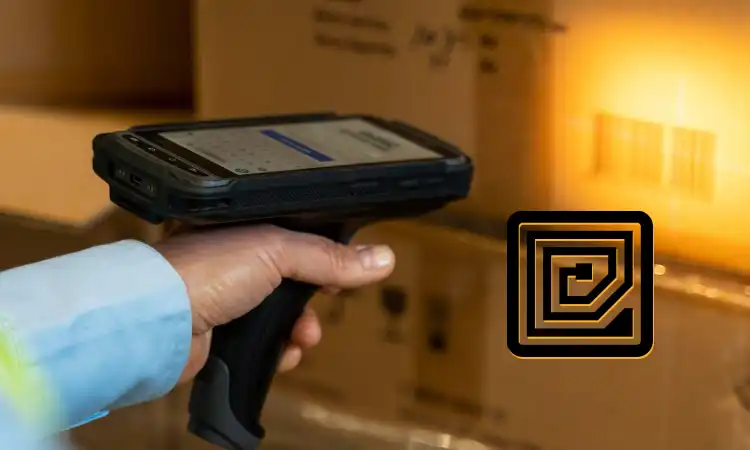Radio Frequency Identification, or RFID for short, is a technology that uses electromagnetic fields to identify and track tags attached to objects automatically. It is most commonly associated with inventory tracking in manufacturing and retail settings. However, RFID technology also has many other applications – from security systems to medical devices. Let’s look at some of the ways RFID technology is used in everyday life.
Access Control & Security Systems
Using RFID tags and readers, businesses can easily control access to their buildings and secure areas within them. The tags can be used to open doors or activate gates without the need for keycards or passwords, allowing only authorized personnel access. This reduces the risk of uninvited visitors entering restricted areas while providing an added layer of security for employees.
Automated Checkout Systems
Many retailers are beginning to use RFID tags and readers in their automated checkout systems. By placing an RFID tag on each item, customers need to hold their items near the reader to complete a purchase without having to scan each item individually. This eliminates long lines at the cash register and makes check-out faster and easier for customers and store associates.
Contactless Payment Systems
As more people become concerned about privacy issues related to traditional payment methods like credit cards, contactless payment systems are becoming increasingly popular. With contactless payments, customers tap their card or smartphone against an RFID reader to complete a purchase without having to enter any personal information or provide additional authentication methods such as PINs or signatures.
Medical Devices & Implants
RFID technology is also being used in medical devices such as pacemakers and insulin pumps, which require constant monitoring by doctors and nurses to ensure they are working properly. Additionally, implants can be placed under the skin containing small amounts of medication that can be released over time using an external device activated with an RFID reader when necessary. This allows patients with chronic conditions such as diabetes or asthma to better manage their medications without having to visit the doctor multiple times per day for injections or refills.
Luggage Tracking
Airlines have begun using RFID tags on luggage in order to keep track of its whereabouts at all times during transit from one destination to another . By attaching an RFID tag onto each piece of luggage , airlines can quickly locate any lost luggage , reducing delays caused by misplaced items . Additionally , this system also helps reduce theft by making it easier for authorities trace stolen items .
Pet Tracking
Pet owners who have been known for losing their furry friends can now rest easy knowing that there are now pet tracking devices available that make use of RFID technology . These devices typically come with a collar equipped with an embedded chip containing unique identification information which is then linked back to the pet’s owner via GPS tracking . This allows pet owners peace of mind knowing that if their pet ever strays too far away from home , they will be able get them back safely before anything terrible happens .
Smart Cards
Smart cards are becoming more prevalent than ever before , offering users easy access into various locations such as offices , hotels , gyms , etcetera . They usually come equipped with embedded chips containing personal information about the user which is then accessed through an external reader connected directly into a computer system where it will grant entry only if it detects the right code embedded on it’s chip matches up with what’s stored inside the computer database .
Asset Tracking
In many industries asset tracking plays a major role when it comes down ensuring maximum efficiency throughout operations due its ability provide real-time insights on where certain tools/machines may be located during specific periods within production cycles so that companies can better anticipate when they will need replacements parts / new equipment etcetera prior running out completely eliminating unnecessary downtime due lack supplies availability resulting increased customer satisfaction levels overall profitability levels company-wide.
Inventory Management
Inventory management involves process keeping track products regularly stocked shelves warehouses storerooms etcetera so business know exactly how much stock they have on hand date time save costs ordering unnecessary amounts unnecessary ordering causes increase prices goods pass consumer driving away potential customers additionally restocking certain items bought high volumes becomes easier quicker as managers aware current stock levels allow adjust accordingly
Environmental Monitoring
Environmental monitoring refers practice of collecting data environment by measuring indicators such as temperature, humidity air quality, water quality, sound intensity, fields radiation levels, etcetera give scientists deeper understandings of ecosystems help determine possible effects of human activity planet Earth
Animal Tracking
Animal tracking refers process of locating animals natural habitats using data collected from telemetry satellite receivers drones aerial photography GPS collars implanted animals etcetera these activities allow researchers to gain valuable insight into migratory patterns behavior species helping conservation efforts worldwide.
Educational Purposes
Last but not least many schools around the world incorporate RFID technology for educational purposes students are given badges/cards containing unique ID numbers allowing educators to track attendance monitor progress classroom activities etcetera provides parents with real-time updates regarding a child’s academic performance teaching style teachers increase student engagement classroom setting.
As you can see there are many applications for radio frequency identification (RFIDs), from asset tracking to environmental monitoring and beyond! While most people think of it as just another way to monitor inventory, this versatile technology has many more uses than just that – making it one of today’s most important advances in modern technology! With its wide range of uses across numerous industries, there’s no doubt that we’ll continue seeing more applications for this innovative technology over time!










